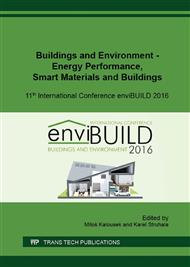p.547
p.556
p.564
p.577
p.585
p.593
p.601
p.609
p.618
Environmental Simulations and their Role in the Research of Human Responses to Environmental Stimuli
Abstract:
The paper is aimed at the problematics of environmental simulations as one of the efficient methods of behavioural research for exploring the reactions of respondents to certain environmental settings. It explores the contemporary situation of the development of simulation at different levels within the environment, serving as visualizations of designed spaces, for games and simulation /testing of subjective and objective responses to different environmental stimuli. In our long-term research at the BCDlab, we are focused on body conscious design, which means exploring relationships: body/nervous system and the environment with an aim to design human friendly solutions through spatial design. To gain our own experiences with environmental simulations and their impact, in 2015, the Faculty of Architecture BCDlab, developed an interactive application, BCD-APP, which works as a web interface and also in virtual reality. The paper presents the process of setting research methods and results of the first pilot tests of the app as a research tool, with a small controlled group of respondents. They were confronted with pre-selected settings of materials, colours and surface finishing, and with the setting of their own choice, the subjective and objective physiological reactions (brain waves and respiration) were measured by EEG sensors and evaluated in a Labchart environment.
Info:
Periodical:
Pages:
618-624
Citation:
Online since:
December 2016
Authors:
Price:
Сopyright:
© 2017 Trans Tech Publications Ltd. All Rights Reserved
Share:
Citation:


